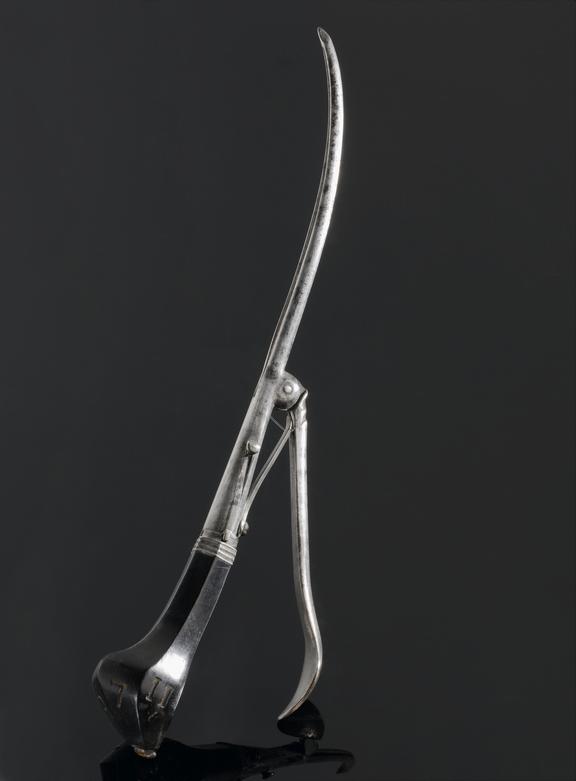


Frere Come's small single-bladed lithotane, curved, with spring handle for blade and bone handle, c. 1750
A lithotome is used to cut the bladder in order to remove stones (hard masses in the bladder). Frère Côme’s lithotome (1703-1781) is also known as a lithotome caché. Caché translates from French as “hidden”, meaning that the lithotome had a hidden blade. The blade was introduced into the bladder and then released using the spring handle. The surgeon controlled how far the blade moved – any errors could lead to internal bleeding and damage. This example is made from metal and has a bone handle.
Details
- Category:
- Surgery
- Collection:
- Sir Henry Wellcome's Museum Collection
- Object Number:
- A610394
- Measurements:
-
overall: 25 mm x 255 mm x 85 mm, .11kg
- type:
- lithotome




